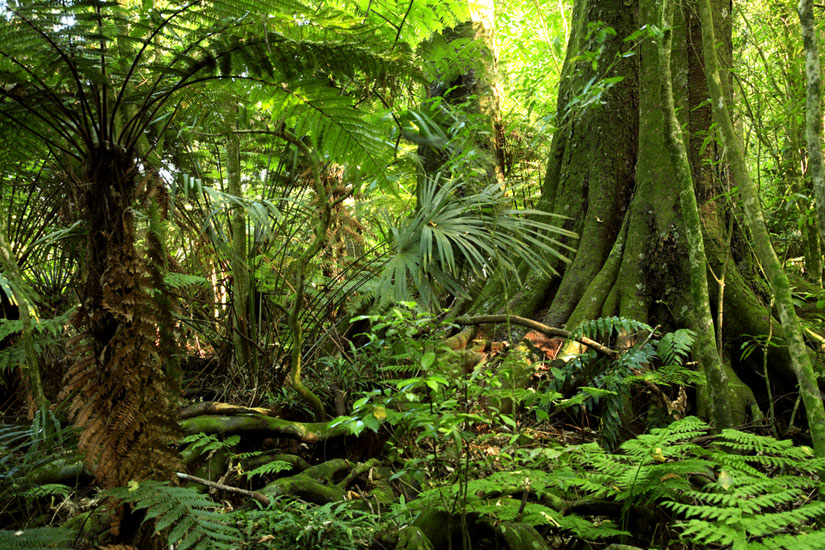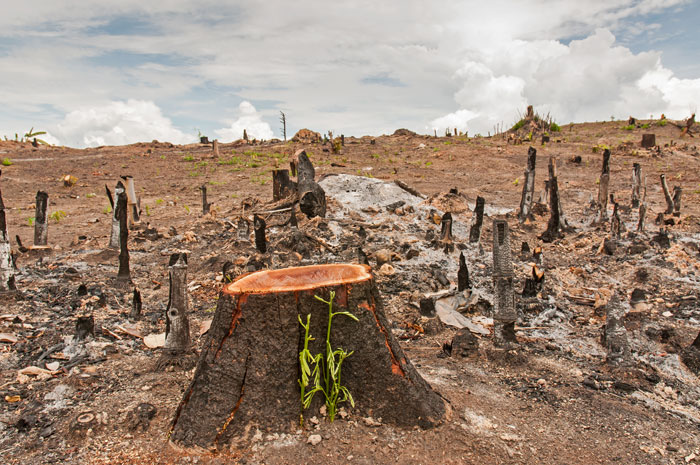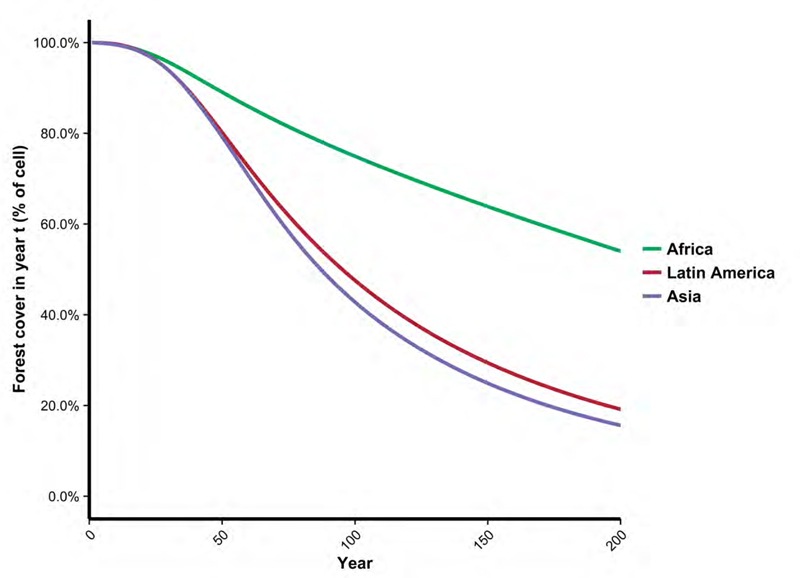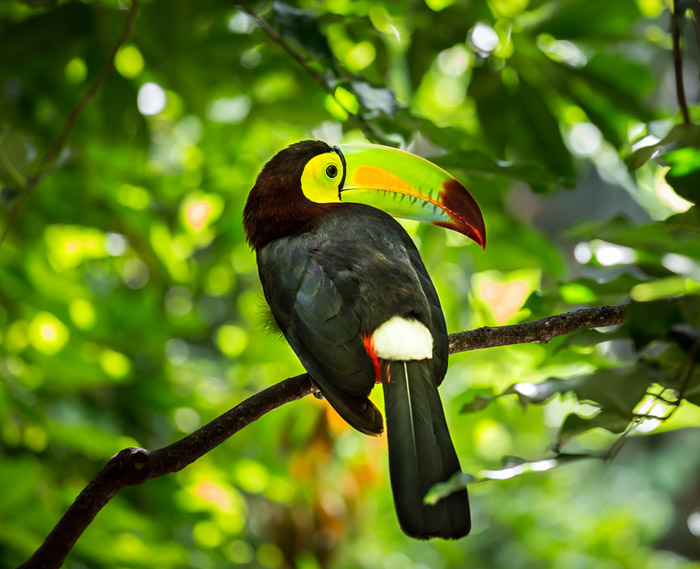
27th August 2015 Studies highlight deforestation risk in the 21st century and beyond Two separate studies highlight the need for major policy changes to protect the world's forests over the next century and beyond.
Forests cover an area of four billion hectares (15 million square miles) or about 30 percent of the world's land area. They are the dominant terrestrial ecosystem of Earth, accounting for 75% of the biosphere's gross primary productivity and containing 80% of the world's plant biomass. Forests provide crucial "ecosystem services" that benefit humanity in various ways. These include the sequestering of carbon from the atmosphere, regulation of the water cycle, soil formation, nutrient recycling, biodiversity and gene pool conservation. They also serve an aesthetic function by offering scenic and landscape beauty. The mere presence of trees has been shown to improve both physical and mental health for people living near them, particularly in urban areas. Unfortunately, the world is losing forests at an alarming rate. As of today, more than three-quarters of the remaining tropical forests have now been degraded by human actions and this figure is likely to increase in the future. Research led by University College London (UCL) and published in the journal Science identifies a new and more dangerous phase of deforestation that is rapidly emerging. According to the researchers, the first phase occurred when our ancestors moved into tropical forests, as hunter-gatherers. This was followed by a second phase around 6,000 years ago, with the emergence of tropical agriculture. Throughout this time, the overall health of forests was maintained. Today, however, we live in a third phase – characterised by much greater impacts, with distant decision-makers directing how land is used, including permanent intensive agriculture, often for soybeans or palm oil, frontier industrial logging for timber export, cross-continental species invasions, and the early impacts of climate change. The UCL researchers term this phase the era of "Global Integration", affecting even the most remote areas. Lead author, tropical forest expert Dr Simon Lewis, comments as follows: "Earth has lost 100 million hectares of tropical forest over the last 30 years, mostly to agricultural developments. Few people think about how intertwined with tropical forests we all are. Many foodstuffs include palm oil which comes from once pristine Asian tropical forest, while remaining intact forests are buffering the rate of climate change by absorbing about a billion tonnes of carbon each year." Current trends look set to intensify without major policy changes, as global food demand is projected to double, over 25 million kilometres of road are predicted to be built by 2050, and climate change intensifies, creating a new phase of human dominance of tropical forests. Having driven the world's highest deforestation rates in South East Asia, the palm oil industry is now gearing up to repeat this process across Africa. Dr Lewis adds: "I fear a global simplification of the world's most complex forests. Deforestation, logging and road building all create fragmented patches of forest. However, as the climate rapidly changes, the plants and animals living in the rainforest will need to move to continue to live within their ecological tolerances. How will they move? This is a recipe for the mass extinction of tropical forest species this century." "What is needed are unbroken areas of forest that link today's core tropical regions with forest areas about 4 degrees cooler – so as temperatures rise and rainfall patterns change, species have a better chance of surviving rapid 21st century climate change. We need to bring conservation in line with the reality of climate change," says Lewis.
In a separate paper, released by the Centre for Global Development (CGD) this week, researchers conclude that tropical forests will disappear faster than previously thought. Using the most sophisticated satellite imagery available from over 100 countries, CGD environmental economist Jonah Busch and research associate Jens Engelmann have projected a pattern of deforestation that will climb steadily through the 2020s and 2030s before accelerating around 2040. On a business-as-usual scenario, they find:
Longer term, the outlook is even worse. If humanity continues its pattern of endless consumption, their research indicates that less than one-fifth of Asia and Latin America's forest cover may remain by 2200.
In their report, Busch and Engelmann list three possible solutions that could reverse this trend. The first is an international payment system from rich countries to poor tropical countries, to keep forests standing. This is already beginning to happen – last year, Norway agreed a deal with Liberia and promised to pay the small African nation $150m (£91.4m) in development aid, to stop deforestation by 2020. The second is for developing countries to introduce carbon pricing. With a charge of $20-per-ton of carbon dioxide on deforestation, emissions would drop by more than 20 percent by 2020; a $50-per-ton price would cut emissions nearly in half by 2050. Their third solution is restrictive policies on deforestation. If developing countries introduce tighter regulation on deforestation, combined with better satellite monitoring and law enforcement, this would have a drastic impact. "Conserving tropical forests is a bargain," explains Busch. "Reducing emissions from tropical deforestation costs about a fifth as much as reducing emissions in the European Union." "The Paris climate agreement needs to provide funding and other resources to stop tropical deforestation," says Engelmann. "A climate agreement without robust action on forests will simply not be enough."
The other paper, by UCL, suggests giving forest dwellers formal collective legal rights over their land, which previous studies have shown is one of the best ways of preserving forests. A study of 292 protected areas in Amazonia showed that indigenous reserves were the most effective at avoiding deforestation in high pressure areas. Ensuring that local people are given collective long-term rights over their lands would mean that benefits flowing from forest lands accrue to the local people. This can provide the beginnings of "development without destruction" programs, tackling poverty while maintaining forest cover. This, the authors have argued, provides human rights and conservation win-wins. Dr Lewis adds: "With long-term certainty of tenure people can plan, maintaining forests while investing in improving agricultural productivity without expanding into forested lands. Forest dwellers won't be perfect managers of forests – but they won't look for a quick profit and then move on, as big businesses often do." "The Paris climate change talks in December are doubly important for forests and forest communities. The levels of emission cuts will be a critical factor in determining how many tropical forest plants and animals go extinct over the coming decades and centuries. The agreements on reducing deforestation, including durable finance, will be pivotal. The final test will be whether some funds for adaptation will include land-use planning to retain forest connectivity as the climate rapidly changes." A new satellite – the BIOMASS Earth Observation mission – will help to improve the global monitoring of forest cover when launched in 2019. This will feature a radar powerful enough to sense both the height and wood content of individual trees. In the Amazon rainforest alone, there are an estimated 390 billion individual trees.
Comments »
|











